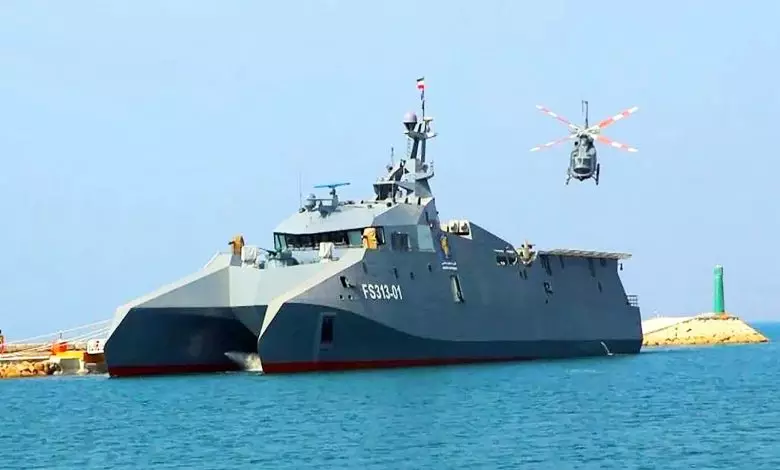Explainer: Why is IRGC’s Abu Mahdi al-Muhandis warship a big breakthrough?

At a ceremony in the southern Iranian port city of Bandar Abbas on Saturday, the new Abu Mahdi al-Muhandis warship was unveiled, the third class in a series of domestic twin-hull naval vessels.
A new-class catamaran, along with one hundred Tareq and Ashura class fast-attack craft, was delivered to the Islamic Revolution Guard Corps (IRGC) in the presence of top military officials.
The impressive ceremony in the capital of Hormozgan was attended by IRGC commander Major General Hossein Salami, IRGC Navy commander Rear Admiral Alireza Tangsiri, and other senior military officials.
Major General Salami, in his remarks during the ceremony, said the country sees no limits in efforts to expand its naval power amid growing maritime tensions in the region caused by the Israeli war on Gaza.
“Today is a great and historic day for the proud nation of Iran, the day that the IRGC Navy, as the pioneer of the defensive power of the Islamic Republic of Iran, has made headway in its offensive and defensive power,” he remarked.
The top IRGC general said the Islamic Republic will expand its defense power to the extent it deems necessary to protect its national interests, and also warned that the enemy could be harmed if it stays near the Iranian territory.
“The enemy must stay away from the region. The enemy will retreat as we grow stronger and fortunately, our enemy understands the logic of power although they may fail to understand the power of logic,” he asserted.
Rear Admiral Tangsiri, in his speech, provided some features about the lead ship of the new Abu Mahdi al-Muhandis class, describing it as a domestically designed and manufactured warship with sophisticated radar-evading technologies.
He said the warship has a naval endurance of 14 days and can cruise within a radius of 2,000 nautical miles (3,700 kilometers) without being detected by enemy radars and reconnaissance systems.
It relies on four homegrown propulsion systems and can stay afloat under force six conditions and carry out naval missions under force five conditions due to its advanced homegrown hull design.
The naval commander said three domestic knowledge-based companies are involved in the development of vessels for the IRGC Navy, and it took 15 months for the Abu Mahdi Muhandis warship to be ready.
He also informed that the IRGC Navy is set to produce three warships of the same class in less than a year.
The Abu Mahdi Muhandis warship has been named after the former deputy head of Iraq’s Popular Mobilization Units (PMU) who was assassinated along with top Iranian anti-terror commander Lieutenant General Qassem Soleimani in a US drone strike outside the Baghdad International Airport in January 2020.
Technical characteristics
The Abu Mahdi al-Muhandis warship class is the third in a series of classes of Iranian naval catamarans after Shahid Nazeri commissioned in 2016 and Shahid Soleimani commissioned in 2022.
Classifying any of the three classes under traditional types of naval vessels is difficult because due to their unique features and purpose, they combine the roles of fast attack crafts, missile corvettes, frigates, destroyers and drone carriers.
For example, the Qassem Soleimani class is relatively smaller in tonnage, comparable to corvettes, but has a longer range (5,000 miles) than modern destroyers and comparable firepower and air defense capabilities to frigates.
All three catamaran designs are uniquely Iranian in the naval sense, which is why US experts classify them in a special category of high-aspect-ratio twin-hull vessels (HARTH).
This design allows breaking the seawater during sailing more easily than a conventional catamaran, as well as more transverse stability in harsh sea states.




